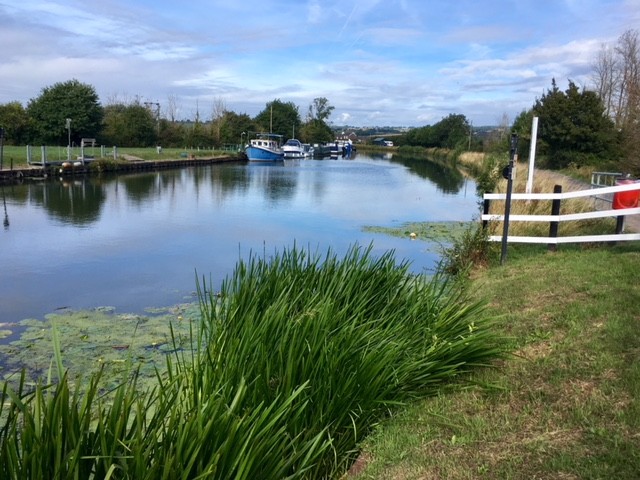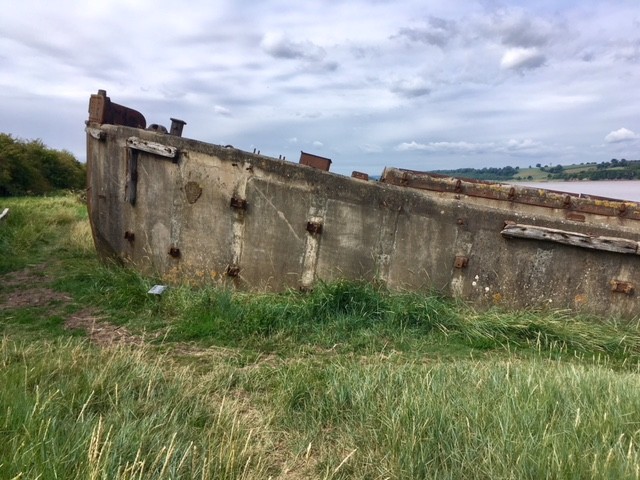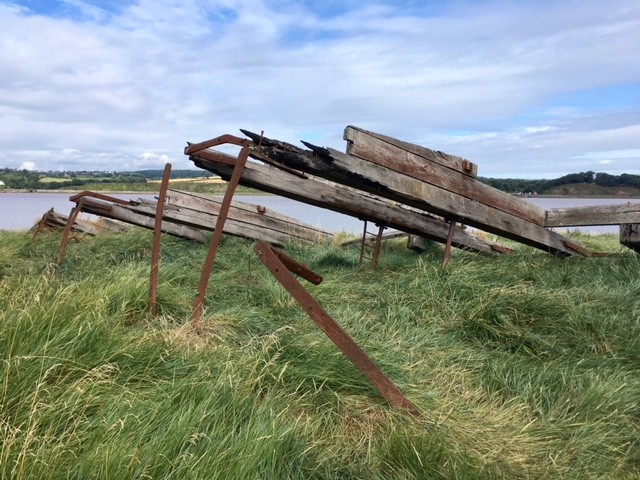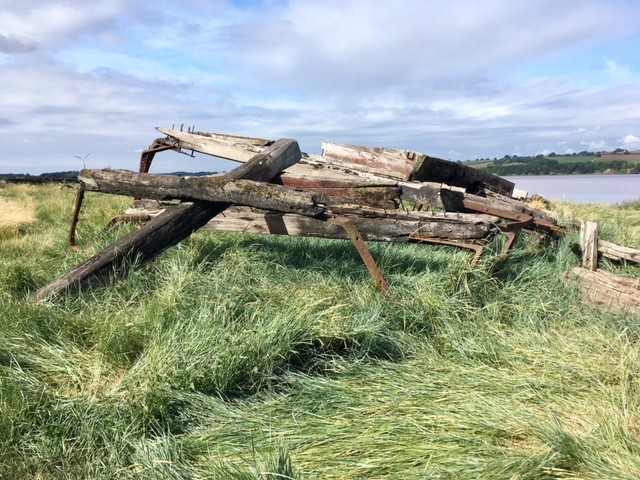If you’re looking for a short quirky walk in Gloucestershire how about visiting a ship’s graveyard? We spent an hour discovering the Purton hulks, one of my British bucket list items, on the way home from an overnight stay at St Briavels Castle YHA.
Gloucester and Sharpness Canal
After parking opposite the church in Purton, we crossed the bridge and followed a sign directing us to the Purton hulks. This took us along a towpath, bordered on one side by the Gloucester and Sharpness canal and the River Severn on the other.

The 16.5 mile canal runs, as you’d expect, between Gloucester and Sharpness. Built to bypass a dangerous stretch of the River Severn it was once the deepest and broadest canal in the world. Nowadays it’s mainly used by pleasure craft and kayakers. In the not too distant past oil tankers and even submarines have navigated its waters!
Purton Hulks

After 15 minutes or so we reached the first few boats. Between 1909 and the 1970s vessels were deliberately beached along the River Severn to shore up the banks and protect the land between the river and canal.

Today there are over 80 vessels in the ship graveyard. Many are hidden under grass or silt. Some are in an advanced state of decay with just the rotting timbers and huge bolts remaining. You certainly need to keep your eyes on the ground, partly so you don’t miss anything but also to avoid the trip hazards.

There’s a huge variety of boats here, from schooners to concrete barges. The Friends of Purton group have investigated and published in-depth histories of each of the vessels on their website. Each ship has a name plaque which you can look up online.

In the same way that I loved learning about the residents of Highgate Cemetery on our recent visit, I enjoyed finding out about the vessels at Purton.
The ship below is Harriett, the last known example of a Kennet built barge. She spent her life in the Bristol docks area, carrying grain and wood pulp.

This is Edith, a Chepstow trow. She used to transport coal between Bristol and the Forest of Dean. Edith has an eventful past, with several collisions and groundings. She was finally beached in the 1960s.

There’s not a lot left of Sally, also known as King. Beached during a snowstorm in 1951 much of her history is a mystery although she may have originated in the Caribbean. Sadly she has suffered at the hands of arsonists who have burnt her timbers in order to extract metals from them.

Photographers will have a field day exploring the hulks. Historians and boat lovers too. I don’t particularly class myself as any of these but they’re well worth a visit. Just don’t leave it too long. They won’t be here forever!

After you reach the last of the accessible boats the path leads back up to the canal. From here you can return along the towpath. Or, if you fancy a longer walk, head into Sharpness in the opposite direction.
More info
- The Friends of Purton website is a mine of information with copious detail on the ships and their histories.
- Wear wellies or boots after rain. It will be very muddy!

What a fascinating place, always love poking around our local shipwreck, if only these boats could tell us their stories.
Hi Christine, I got quite a feeling of sadness when reading your post. Which is silly really as they are just boats after all, but to think that the Friends Of Purton have gone to great lengths to learn as much as they can about each boat sort of makes them more than just boats. I bet each and every boat as a story worth telling.
xx